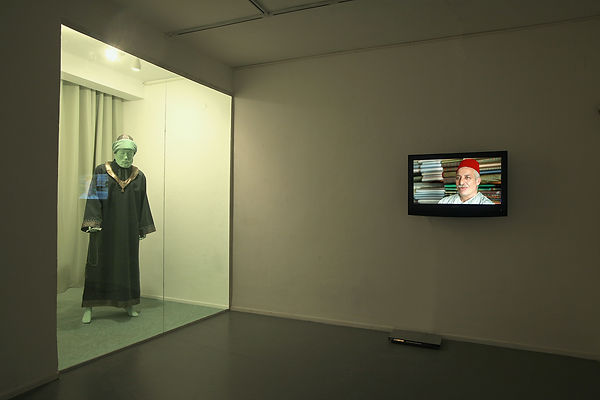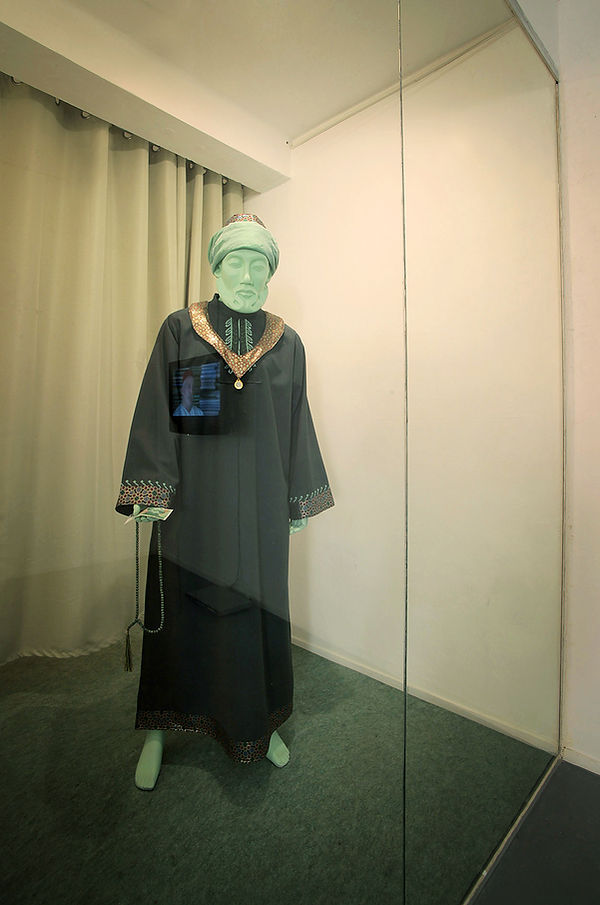Maimonides's Attire
This project reconstructs the likeness of Maimonides, one of the most important figures in Judaism and an influential intellectual in Islamic culture. The installation echoes an exhibit in a wax museum, with a sculpture which was sculpted by Michaeli—based on an old Israeli bill, wearing historically accurate clothes—fabricated by a fabric merchant according to a Palestinian folktale.

Maimonides's Attire, installation view at HaKibbutz Gallery, 2011
The installation consists of a life-like size mannequin, installed behind a display window with a green curtain in the background, and a complimentary video. Visitors were able to draw the curtain, approach the sculpture and take pictures with it, similar to a wax museum experience.
In the accompanying video, Bilal Abu-Khalaf, a fabric merchant from Old Jerusalem, recounts a Palestinian folktale about Saladin and Maimonides. The folktale is considered historically accurate; it revolves around Saladin’s visit in Jerusalem, during which he fell sick. After many doctors failed to cure him, he was finally healed by Maimonides. As a token of gratitude, Saladin gave Maimonides a custom-made ornate jellabiya.



Maimonides's Attire, Mixed-media, 1.5 x 6 x 1', 2011
The sculpture includes a jalabiya, a turban, a keffiyeh and shoulder bands (cotton fabric, silk thread, woven Damascus fabric [silk and 14K gold], raw silk, a full-body mannequin with a polyester cast, gold-plated brass pendant, inlaid with a 1 NIS coin, and a 1000 NIS bill.
The portrait displayed on the bill has a tenuous connection with the real facial features of Maimonides; a closer look reveals that it can not be a genuine depiction and instead is, most likely, a portrait of a Muslim nobleman. This is indicated by the shape of the beard and especially the shaved sideburns, which is forbidden by Jewish law.

Maimonides's Attire, 3:27 minutes, Jerusalem, 2011
The story of Maimonides and Saladin is told in the video by Bilal Abu-Halaf, a Palestinian cloth merchant from the Old City of Jerusalem who imports textiles from Damascus, Morocco, and India. Abu-Halaf is the third generation of cloth merchants in his family and considers himself a descendant of battalion soldiers who traveled to Jerusalem during Saladin’s conquest, 200 years ago. He used his vast knowledge in fabrics and restoration to recreate the Saladin's attire from luxurious gold and silk fabrics made that were imported from Syria.



